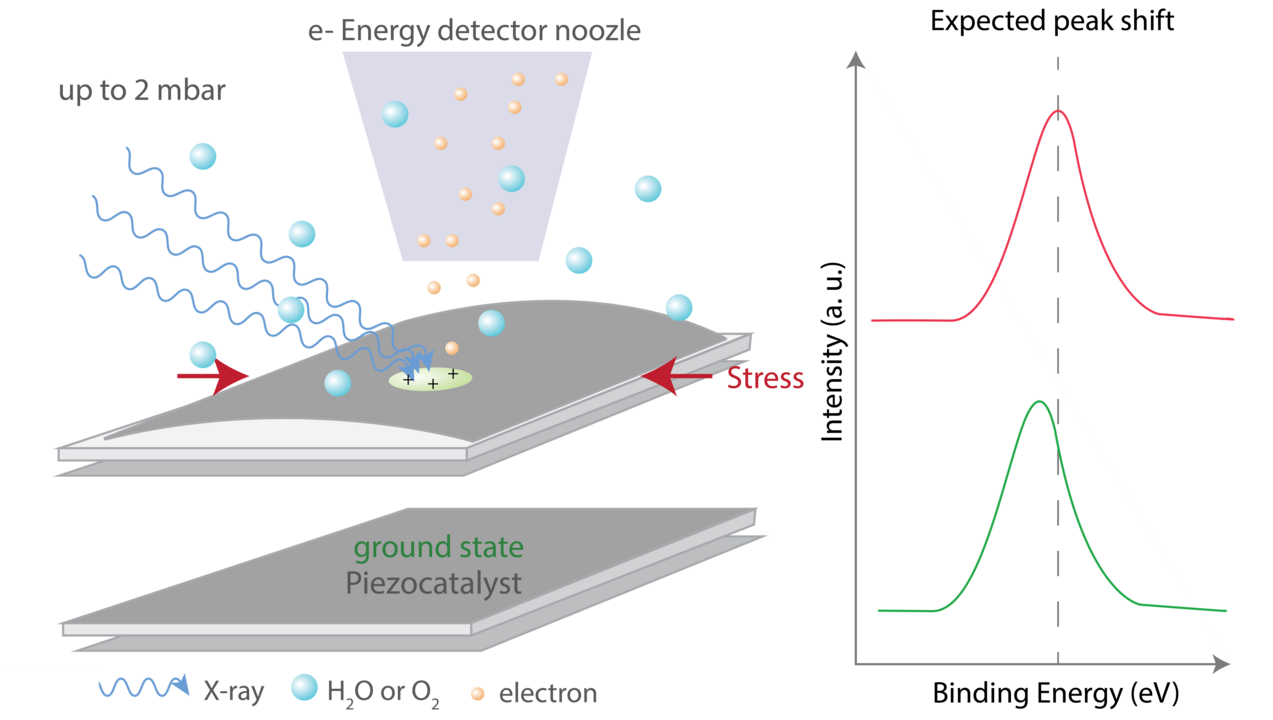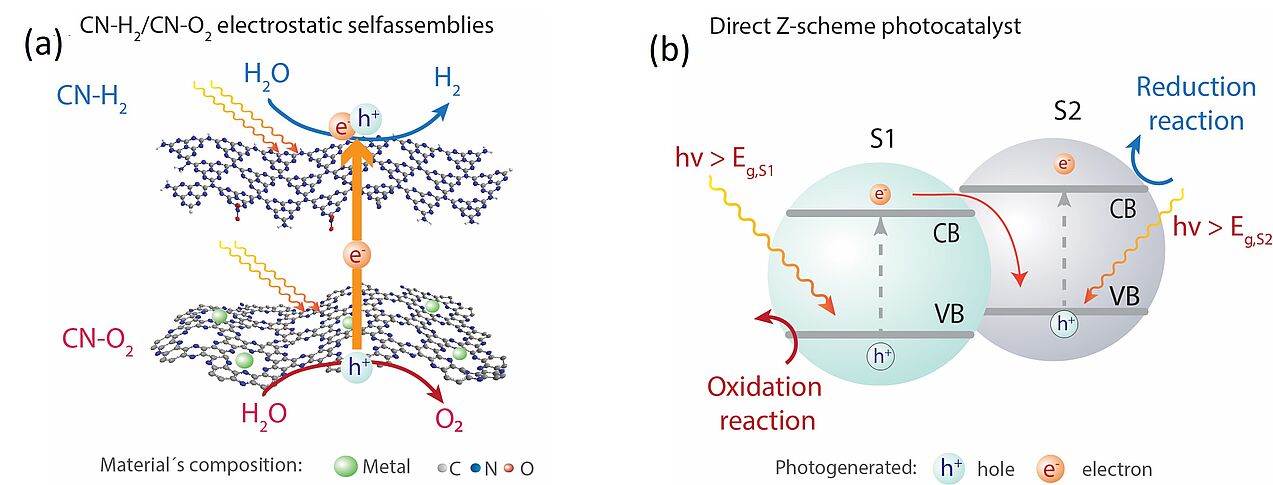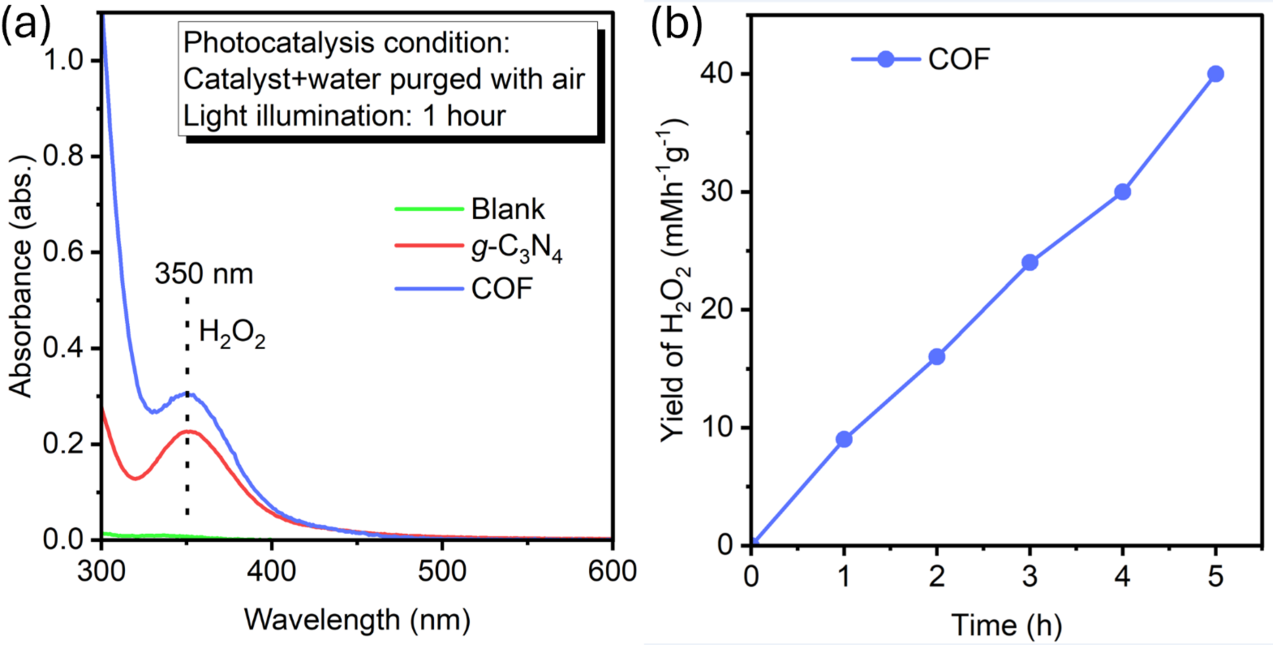Metalloxid/CxNy-Piezokatalysatoren zur Erzeugung von H₂ und H₂O₂ aus Wasser (MCN-H2POWER)

Nationen und Industrien investieren zunehmend in neuartige grüne Energietechnologien, um ihre Ziele der Emissionsreduzierung und des Umweltschutzes zu erreichen. Dennoch bestehen in weit verbreiteten Verfahren wie der Elektrokatalyse und Photokatalyse praktische Herausforderungen fort. Dazu gehören eine starke Abhängigkeit von Edelmetallkatalysatoren, hoher Stromverbrauch sowie geringe Ausbeuten an grünen chemischen Energieträgern und Oxidationsmitteln – insbesondere Wasserstoff und Wasserstoffperoxid.
Daher wird ein grüner und nachhaltiger Ansatz benötigt, der Wasserstoff oder Wasserstoffperoxid ohne den Einsatz von Edelmetallen erzeugen kann. Derzeit entwickelt sich die Piezokatalyse, die mechanische Energie in nachhaltige chemische Kraftstoffe umwandelt, zu einer vielversprechenden neuen Strategie zur Bewältigung der Energiekrise und der Umweltverschmutzung. Allerdings besteht noch eine erhebliche technologische und theoretische Lücke bei der Entwicklung wettbewerbsfähiger Piezokatalysatoren.
Als Antwort auf diese Herausforderung zielt dieses Projekt darauf ab, innovative Materiallösungen und ein umfassendes grundlegendes Verständnis einer nachhaltigen Technik zur Erzeugung von Wasserstoff oder Wasserstoffperoxid zu entwickeln.
- Förderung: Postdoc-Stipendium der Universität Paderborn
- Projektleitung: Dr. Ying Pan
Kohlenstoffverbundstoffe als direkte Z-Scheme-Photokatalysatoren für die Gesamtwasserspaltung (C2-SPORT)

Um den dringenden Energie- und Umweltproblemen zu begegnen, hat die photokatalytische Gesamtwasserspaltung erhebliche Aufmerksamkeit erlangt, da sie als vielversprechende Methode für die großtechnische Erzeugung von Wasserstoff allein aus Sonnenenergie und Wasser gilt. Auf der Suche nach kostengünstigen und weit verbreiteten Photokatalysatoren haben sich Kohlenstoffnitride (insbesondere g-C₃N₄), die aus reichlich vorhandenen Elementen bestehen und geeignete Bandlücken aufweisen, als vielversprechende Alternativen zu den üblicherweise verwendeten metallbasierten Photokatalysatoren herausgestellt.
Trotz ihres Potenzials zeigen Kohlenstoffnitride jedoch nur dann Aktivität in der Wasserstoffproduktion, wenn ein Opfer-Elektronendonor in die Lösung eingebracht wird, und ihre hohe Leistungsfähigkeit hängt häufig vom Einsatz eines Edelmetall-Co-Katalysators ab. Darüber hinaus wird die photokatalytische Effizienz von Kohlenstoffnitriden bei der Gesamtwasserspaltung durch eine ineffektive Ladungstrennung begrenzt, die insbesondere nicht ausreicht, um die erheblichen Überspannungen der Sauerstoffentwicklungsreaktion zu überwinden.
Zur Bewältigung dieser Herausforderungen zielt die Kooperationsinitiative C2-SPORT, an der die Universität Paderborn (Deutschland), die University of Newcastle (Australien) und die Hebei University of Science and Technology (China) beteiligt sind, darauf ab, innovative chemische Lösungen für nachhaltige Technologien zur photokatalytischen Wasserstofferzeugung zu entwickeln. C2-SPORT wird außerdem dazu beitragen, vier qualifizierte Fachkräfte für den Clean-Tech-Sektor auszubilden, die internationalen Partnerschaften zwischen der Universität Paderborn und globalen Forschungseinrichtungen zu stärken und gemeinsame Anstrengungen für eine nachhaltigere und vielversprechendere Zukunft voranzutreiben.
- Förderung: Wissenschaftskolleg – Universität Paderborn
- Projektleitung: Dr. Ying Pan, Jun.-Prof. Nieves López Salas, Dr. Sam Chen, A/Prof. Ran Su
Direkte Synthese von Wasserstoffperoxid aus Wasser, Luft und Solarenergie

Wasserstoffperoxid (H₂O₂) ist ein äußerst vielseitiges Reagenz, das in der chemischen Industrie, der Energiespeicherung sowie der Wasseraufbereitung weit verbreitet eingesetzt wird. Die photokatalytische Herstellung von H₂O₂ aus Wasser und Luft unter Verwendung polymerer Halbleiter hat sich in jüngerer Zeit als vielversprechender und nachhaltiger Ansatz zur Erzeugung grüner Chemikalien und Energieträger herauskristallisiert. Mit Fokus auf Effizienz, Kosteneffektivität und ökologische Nachhaltigkeit zielt die aktuelle Forschung darauf ab, hochaktive, kostengünstige und umweltfreundliche Photokatalysatoren zu identifizieren, die die H₂O₂-Produktion maximieren können.
Kovalente organische Gerüstverbindungen (COFs) und graphitisches Kohlenstoffnitrid (g-C₃N₄) haben aufgrund ihrer einstellbaren Strukturen, hohen Stabilität und günstigen optischen/elektronischen Eigenschaften große Aufmerksamkeit erlangt. Eine besonders effektive Strategie besteht darin, COF/g-C₃N₄-Komposite herzustellen, die die Vorteile beider Komponenten synergistisch vereinen, um die Ladungstrennung zu verbessern, die Oberflächenreaktionskinetik zu steigern und letztlich die Effizienz der H₂O₂-Erzeugung zu erhöhen.¹
Projektziel:
Dieses Projekt hat zum Ziel, einen g-C₃N₄/COF-Komposit-Photokatalysator zu entwickeln und zu synthetisieren, der die komplementären Eigenschaften beider Materialien nutzt. Wir werden systematisch die Struktur-Eigenschafts-Beziehungen innerhalb des Komposits untersuchen und diese mit der photokatalytischen Leistung hinsichtlich der H₂O₂-Produktion korrelieren. Das übergeordnete Ziel ist die Entwicklung eines hoch effizienten, nachhaltigen und kostengünstigen photokatalytischen Systems zur grünen Herstellung von H₂O₂.
- Förderung: Forschungsreserve – Universität Paderborn
- Projektleitung: Shan Wang, Dr. Ying Pan
Kohlenstoffvorstufen mit unterschiedlichen funktionellen Gruppen für kohlenstoffhaltige Materialien mit hoher Ausbeute
Kohlenstoffmaterialien werden in zahlreichen Bereichen wie Energiespeicherung, Katalyse und Elektronik breit eingesetzt. Eine gängige Synthesemethode für Kohlenstoffmaterialien ist die Carbonisierung, bei der geeignete organische Monomere als Vorstufen ausgewählt und anschließend durch Wärmebehandlung zu funktionellen Kohlenstoffmaterialien polykondensiert werden. Die unterschiedlichen Heteroatome, Strukturen und Eigenschaften der molekularen Vorstufen verleihen den Endprodukten jeweils verschiedene Eigenschaften, was ihre Anwendung maßgeblich beeinflusst.
Die Ausbeute und Stabilität kohlenstoffhaltiger Materialien sind zwei entscheidende Eigenschaften, insbesondere im Hinblick auf ihre großtechnische Herstellung und ihre langfristigen Einsatzmöglichkeiten. Dieses Projekt zielt darauf ab, systematisch zu untersuchen, wie die Struktur organischer Vorstufen die Kohlenstoffausbeute beeinflusst.
- Projektleitung: Dr. Ying Pan
